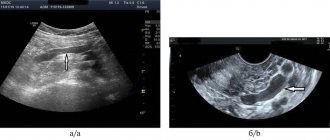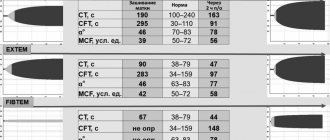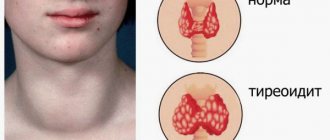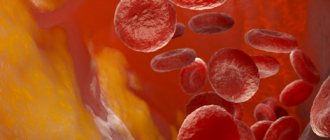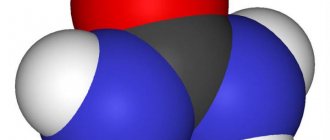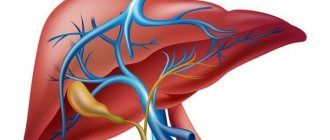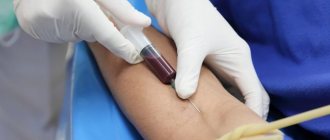What criteria influence the degree of iron accumulation?
The fundamental criteria include the amount of iron consumed in food, taking medications containing iron, the condition of internal organs and tissues, the distinctive characteristics of the menstrual cycle and genetics.
With a lack of iron, iron deficiency anemia can form. However, the most dangerous is the level of iron in the body that exceeds the norm. The substance accumulates in the internal organs, after which it passes into the skin, heart muscle, types of glands, and joints. Such processes have a dark connection with the development of rapid “aging” and disruption of the activity of these organs. The threats of developing cirrhosis and liver cancer, diabetes mellitus, severe heart failure, and dysfunction of the thyroid and gonads are increasing.
The main reasons that can contribute to the accumulation of excess substances include mutations in genes, abuse of certain medications, regular blood transfusions, destruction of red blood cells and chronic dysfunction in the liver.
causes of increased iron in the blood
At this point, these kinds of events can be caused by heredity. The disease in question is called primary hemochromatosis, abnormal genes of which are found in every 250 inhabitants of Northern Europe. The same applies to Russia. The disease is mainly found in representatives of the stronger sex in adulthood, and in representatives of the fair sex - after menopause.
Initially, similar genes with disorders may not be expressed in anything, however, with the further development of liver disease into a chronic form, the genes fully manifest themselves. Approximately 1/4 of cases can be associated with fatty liver disease due to abuse of alcoholic beverages and so on, viral hepatitis of various degrees and forms.
Causes
Iron, which comes from food, is absorbed in the gastrointestinal tract and settles in certain human organ systems, be it the liver or joints.
The reason for this process may be either the action of a gene that provokes increased absorption of iron, or long-term excessive intake of this element into the body along with chemicals or blood transfusions. Degradation of organs affected by excess iron does not occur immediately, but over time the symptoms only progress.
Symptoms of too much substance
Symptoms of excess iron in the body:
- Detection of liver enlargement in size or transformation of biochemical criteria. Their reason may not be clear.
- Detection of increased hemoglobin, iron, ferritin, transferrin in the blood.
- The presence of dark spots, cracked skin in the area of the armpits, groin folds, old scars.
- Various combinations of diseases: liver cirrhosis, diabetes mellitus, joint damage, pathology of the heart and endocrine glands.
- Having close blood relatives with hemochromatosis or PWS.
What you should know about increasing iron levels in the body
It is well known that iron is an essential element for all living organisms living in an oxygen environment. It is necessary for the transfer of oxygen (as part of hemoglobin) to all organs and tissues. Also, iron is part of the enzymes involved in “cellular respiration.”
The human body contains no more than 3-4 grams of iron and this amount is carefully maintained by regulating its absorption in the small intestine. The daily food requirement for this element is about 10 mg for men and 20 mg for women of childbearing age.
What factors affect iron levels?
Various factors influence iron levels in the body. The most important of which are: the amount of iron entering the body with food, taking medications containing iron, the fact of blood transfusion, the condition of the liver, the mucous membrane of the stomach and small intestine, the presence of blood loss, features of the menstrual cycle and hereditary causes.
If there is not enough iron in the body, iron deficiency anemia develops. But even more dangerous is the excess iron content, which accumulates excessively in the liver, spleen, and then in the skin, heart muscle, pancreas, thyroid and gonads, in the joints, which leads to an accelerated rate of “aging” and damage to these organs, growth in them connective tissue and disruption of their work. The risks of cirrhosis and liver cancer, diabetes mellitus, severe heart failure, and dysfunction of the thyroid and gonads increase.
The main reasons leading to oversaturation of the body with iron are genetic mutations, excessive intake of iron into the body from food (in red meat, wine, etc.), abuse of iron preparations (especially when administered intravenously), frequent blood transfusions, destruction (hemolysis ) red blood cells and chronic liver diseases.
Today, the high prevalence of iron oversaturation is known due to hereditary factors. This disease is called primary hemochromatosis, abnormal genes of which are detected in 1 in 250 residents of Northern Europe, and about the same number in Russia. Most often, this disease is detected in men over 40 years of age, less often in women after menopause.
Partially mutant genes for this disease may initially not manifest themselves in any way, but with the development of chronic liver damage, these genes are turned on, and the patient develops iron overload syndrome (IOS). Often, in approximately 20-30% of cases, this is observed with non-alcoholic and alcoholic fatty liver disease, viral hepatitis B and C.
How to suspect an oversaturation of the body with iron?
- If liver enlargement and/or changes in liver biochemical parameters are detected and their cause is not clear.
- If there is a chronic liver disease and, despite the treatment, “disturbed” biochemical parameters of the liver remain.
- If any examination reveals an increase in hemoglobin, iron, ferritin, transferrin in the blood.
- If you notice darkening of the skin on open areas of the body, hyperpigmentation and dry skin in the area of the armpits, groin folds, and old scars.
- If there are any combinations of diseases: liver cirrhosis, diabetes mellitus, joint damage, pathology of the heart and endocrine glands.
- If you have relatives suffering from hemochromatosis or PWS.
What to do if signs of iron oversaturation are detected?
If you identify signs of excess iron in the body, you should consult a doctor who specializes in the treatment of iron metabolism disorders, who will help you understand the cause of this condition, prescribe an examination plan, select the correct treatment and determine follow-up.
Methods for treating iron overload include: strict adherence to a diet limiting iron content to 8 mg/day, avoidance of alcohol, therapeutic bloodletting (phlebotomy), and the use of antioxidants.
Remember, iron accumulated in internal organs remains there forever! Therefore, timely detection and treatment of iron overload syndrome will prevent the occurrence and progression of damage to the liver and many other organs, the development of liver cancer and prolong your life.
GC Expert has developed a special program “Iron overload and hemochromatosis”, within which you can undergo an in-depth examination to determine the causes of iron overload and receive an individual treatment plan.
criteria for an excess of a substance in the body?
In such a situation, we recommend that you contact specialists who treat metabolic dysfunctions. A medical professional will help you find the causes, develop a personal research and treatment plan, and establish strict monitoring of your health.
Methods for treating excess iron :
- compliance with dietary nutrition,
- refusal of alcoholic drinks,
- use of antioxidants.
You should always remember that iron is not removed from the body, but remains in it for life!
This is why it is so important to detect this in the early stages and prevent the spread of dangerous substances to stop the functioning of the liver and many other organs, forming liver cancer, which will help you extend the years of your life.
Treatment
Hemochromacy does not occur on its own, but is provoked by certain risks that the patient should be aware of, be it heredity or frequent blood transfusions. If you notice the first symptoms, you should consult an endocrinologist, since delaying treatment leads to a worsening of the body’s condition.
During the treatment process, the endocrinologist prescribes a special diet to the patient, which excludes foods rich in iron from the diet, including apples, beets, buckwheat, red meat, red grapes, and pomegranates. Any alcoholic drinks are excluded; moreover, alcoholism itself causes hemochromatia.
Excess blood is treated through drug therapy prescribed by a doctor. Another effective way to combat this disease is periodic bloodletting, which also must be carried out under the close supervision of a doctor, as the level of hematocrit and hemoglobin in the blood should be monitored.
References
- Federal clinical guidelines for the diagnosis and treatment of iron deficiency anemia, 2015. - 58 p.
- Lukina, E.A., Smetanina, N.S., Tsvetaeva, N.V. and others. Iron overload: diagnosis and treatment. National clinical guidelines, 2021. - 14 p.
- Rumyantsev, A.G., Maschan, A.A., Chernov, V.M. Federal clinical guidelines for the diagnosis and treatment of iron deficiency anemia, 2015. - 43 p.
- Zaiko, N.N., Byts, Yu.V. Pathological physiology. M.: Medpress, 2008. - 640 p.
- Ganz, T., Nemeth, E. Iron metabolism: interactions with normal and disordered erythropoiesis. Cold Spring Harb Perspect Med., 2012. - Vol. 2(5).
- Chaparro, C., Suchdev, P. Anemia epidemiology, pathophysiology, and etiology in low- and middle-income countries. Ann NY Acad Sci., 2021. - Vol. 1450(1). — P. 15-31.
Why and how much?
Iron acts as a catalyst (accelerator) for many metabolic processes. Without it, full breathing is impossible. Not only the lungs participate in respiration; every cell “breathes” as long as it is endowed with oxygen.
But iron is not synthesized independently; its source is certain foods.
Approximately 15 mg of the element is needed per day for women (the dosage is doubled for pregnant and lactating women), 10 mg for men, and for children from 5 to 15 mg.
According to statistics from the World Health Organization, iron deficiency is observed in a large part of the world's population (more than 50%).
Excess iron
An overdose of iron in a healthy person is quite difficult to achieve as part of a normal diet. Iron is a rather ungrateful mineral component and is only absorbed to a small extent.
Additionally, many other food ingredients can effectively prevent this. We are talking about black tea, coffee, products containing calcium, phytic acids, fiber or polyphenols, which are almost impossible to get rid of.
This looks a little different with iron supplements. A large dose of the element is concentrated into a small tablet that is easy to swallow. Supplement overdose can result from taking too much or too many different medications, most of which contain iron.
In a healthy person, a situation in which the body cannot cope with excessive iron intake is unlikely, including due to natural protective mechanisms. This is an HFE protein that blocks the absorption of iron in the intestines when levels are high. Specific genes are responsible for its production.
Unfortunately, there are people for whom these mechanisms do not work properly. These people suffer from hemochromatosis.
Hemochromatosis is a genetically determined disease. Serious symptoms occur when there is a significant excess of iron in the tissues and hemochromatosis is detected only after 30-40 years. In women, the first symptoms of the disease and its detection may occur even later.

